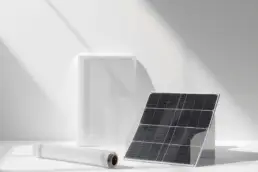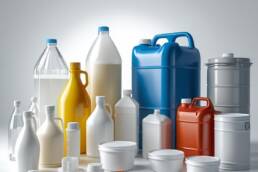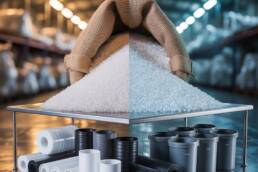Thermoplastic polymer is broadly diagnosed for its versatility, durability, and price-effectiveness. First synthesized in 1951, it quickly gained a reputation across several industries due to its first-rate physical, chemical, and thermal houses. From packaging and car elements to textiles and scientific gadgets, polypropylene (PP) plays a crucial position in modern production and product design.
The importance of polypropylene (PP), structural characteristics, advantages
1. Chemical Structure and Composition
Polypropylene is a polymer crafted from the monomer propylene (C₃H₆). It belongs to the polyolefin circle of relatives, which additionally includes polyethylene (PE). The polymerization of propylene results in lengthy chains of hydrocarbons, giving PP its strong characteristics.
There are two primary styles of polypropylene based on molecular shape:
Isotactic polypropylene – has a normal and symmetrical shape, presenting better crystallinity and electricity.
Atactic polypropylene – greater amorphous and rubbery, regularly used as an additive.
2. Key Physical Properties of Polypropylene
- Lightweight
Polypropylene is drastically light, with a density of about 0.90 g/cm³. This makes it one of the lightest commercial plastics, perfect for packaging and automotive programs where weight loss is critical.
- High Flexural Strength
PP exhibits high-quality tension and flexural energy. It can face up to widespread strain and mechanical stress without deforming, making it suitable for structural parts.
- Impact Resistance
Although no longer as tough as a few engineering plastics, PP gives true effect resistance, in particular when copolymerized with ethylene (as in effect-changed PP). This makes it long lasting below day by day wear and tear.
3. Thermal and Chemical Resistance
- High Melting Point
Polypropylene has a tremendously high melting point, approximately 160–a hundred and seventy°C (320–338°F). This allows it for use in warm-fill packaging and microwave-secure containers.
- Resistance to Chemicals
PP is resistant to an extensive range of chemicals such as:
Acids and bases, Alcohols, Detergents, Aqueous answers
This property makes it an extraordinary choice for laboratory systems, chemical garage containers, and scientific components.
4. Moisture and Environmental Resistance
- Low Moisture Absorption
Polypropylene no longer soak up water, maintaining its integrity in wet environments. This is effective in applications like marine merchandise, pipes, and outside gear.
- Weather Resistance
While PP has mild UV resistance, it can degrade while exposed to daylight for extended intervals. However, UV stabilizers can be delivered to enhance outside performance.
5. Electrical Insulation Properties
PP is a terrific electric insulator due to its excessive dielectric strength. It’s normally utilized in electric housings, wiring insulation, and capacitor film layers.
6. Processability and Manufacturing Advantages
Polypropylene (PP) is simple to procedure using diverse techniques like:
Injection molding, Extrusion, Blow molding, Thermoforming
Its go with the flow characteristics and potential to be recycled a couple of instances without sizable assets loss make it a favored fabric for producers.
7. Types of Polypropylene
- Homopolymer PP
This is the most commonplace type, appropriate for programs requiring excessive electricity and stiffness.
Typical uses: Food bins, Pipes, Automotive interiors
- Copolymer PP
Copolymerized with ethylene to enhance longevity and effect resistance.
Typical makes use of: Industrial components, Luggage, Medical gadgets
8. Common Applications of Polypropylene
- Packaging Industry
Food packing containers
Bottles, Caps and closures, Plastic baggage
- Automotive Industry
Battery cases, Interior trim, Bumpers, Under-hood additives
- Medical Sector
Syringes, Vials, Medical trays
Lab device (due to sterilization compatibility)
- Textiles and Fibers
Non-woven fabrics (utilized in diapers and face masks)
Carpets, Upholstery
- Consumer Products
Furniture, Toys, Kitchenware, Storage packing containers
9. Advantages of Polypropylene
Cost-effective: One of the cheapest thermoplastics to be had.
Recyclable: Marked as #5 plastic, widely recycled.
Food-secure: Approved by the FDA for food touch.
Customizable: Can be modified with fillers and components for particular.
10. Limitations of Polypropylene
Despite its many blessings, PP does have some obstacles:
Susceptible to UV degradation without stabilizers.
Poor resistance to aromatic and chlorinated solvents.
Brittle at very low temperatures.
Conclusion
Polypropylene (PP) remains a cornerstone within the global of modern-day plastics. Its unique aggregate of lightweight structure, chemical resistance, and mechanical power makes it critical in industries from packaging to automotive and healthcare.
As calls for sustainable materials will increase, polypropylene’s recyclability and adaptability will preserve to play a key role in assembly of each overall performance and environmental desires. For producers and product designers, understanding the residences of PP permits smarter, extra efficient fabric selections for a huge variety of packages.



